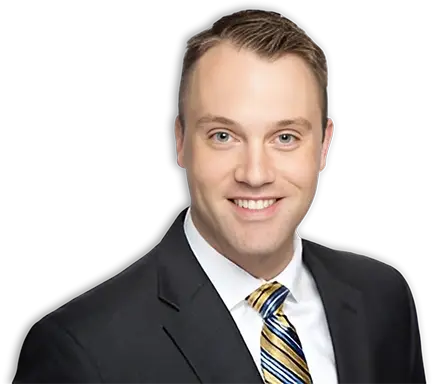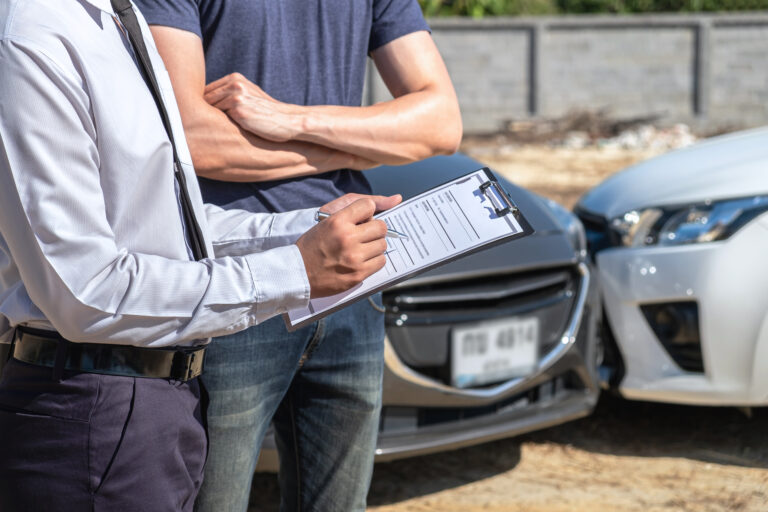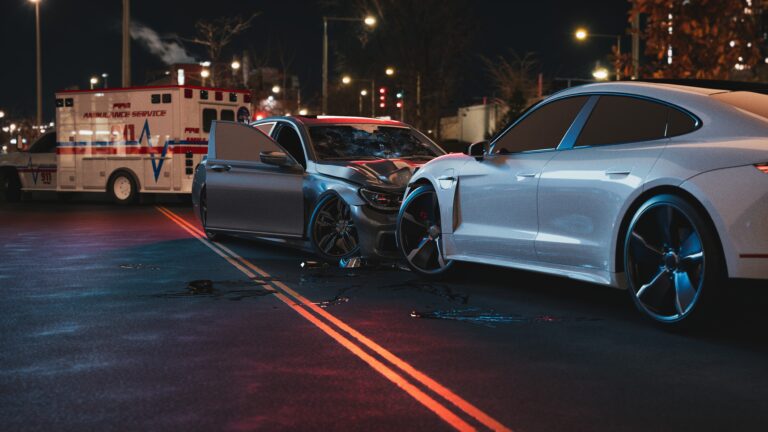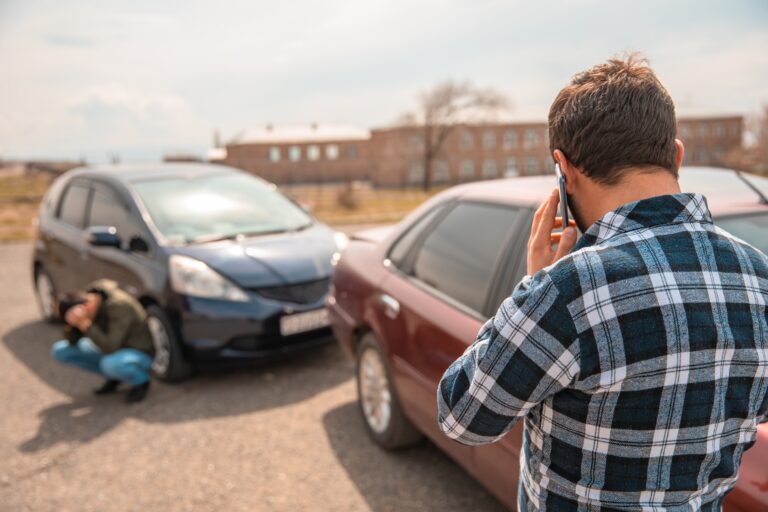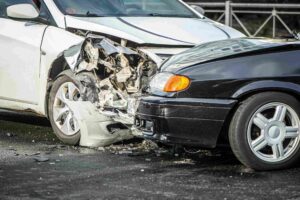 Head‑on collisions are among the most violent roadway events. Two vehicles close on each other, speed doubling the energy, and there is nowhere to hide.
Head‑on collisions are among the most violent roadway events. Two vehicles close on each other, speed doubling the energy, and there is nowhere to hide.
In Baltimore, that can happen on undivided stretches of Belair Road, York Road, Washington Boulevard, Edmondson Avenue, or when a wrong‑way driver appears on the Jones Falls Expressway or I‑95.
If you or someone you love was hurt in a head-on crash, our experienced car accident lawyers in Baltimore from Holzman & Dickriede Attorneys at Law are ready to help. You can count on our team to handle everything while you focus on recovery.
Why Head‑On Crashes Are Different
Frontal impacts load the vehicle structure and restraints all at once. They also account for more than half of passenger‑vehicle occupant deaths, which is why these cases demand meticulous investigation and clear proof of liability and damages.
Vehicle size and weight matter too; heavier vehicles shift crash forces onto lighter cars. We explain those dynamics to adjusters and juries so the physics supports your claim’s value.
Common Baltimore Causes of Head‑on Collisions
- Crossing the center line on undivided arterials like Harford, Belair, or Reisterstown Road due to distraction, fatigue, impairment, or speed
- Wrong‑way entries to ramps or one‑way streets downtown, especially at night or after events
- High‑speed passing maneuvers on two‑lane segments outside the city grid
- Loss of control on wet pavement, standing water, or winter black ice on Northern Parkway or Perring Parkway
- Mechanical failures (tire blowouts, steering/suspension defects)
- Commercial truck encroachment on tight lanes or during turns
Each cause leaves different physical clues, such as skid and yaw marks, debris fields, and crush profiles, as well as often digital traces from modern vehicles and city cameras. We move fast to preserve both.
Your Medical Care in Baltimore
Head‑on trauma frequently means polytrauma: traumatic brain injury, cervical and thoracic spine harm, chest and abdominal injuries from belt loads and airbag contact, pelvic and lower‑extremity fractures, and complex lacerations.
Baltimore has world‑class trauma resources, including the R Adams Cowley Shock Trauma Center at the University of Maryland (the state’s primary adult trauma resource center) and The Johns Hopkins Hospital (Level I Adult Trauma Center).
We coordinate with these teams and your treating providers to document the full arc of injury, treatment, and future care.
Maryland Laws That Shape Baltimore Head‑On Cases
Several laws can impact your head-on car accident case. These include:
Contributory Negligence
Maryland retains the contributory negligence rule, meaning a plaintiff found even slightly at fault may be barred from recovery. This doctrine was reaffirmed in Coleman v. Soccer Association of Columbia.
Defense lawyers know this and try to use it aggressively in head‑on disputes; our job is to develop timing, lane‑position, and human‑factors evidence that keeps that door closed.
Seat Belts at Trial
Maryland’s seat‑belt statute generally prohibits using the non‑use of a seat belt as evidence of negligence or to reduce damages in motor‑vehicle tort cases. Do not assume a belt‑use argument will sink your case.
Filing Deadlines
The general statute of limitations for personal injury claims is three years from accrual. If a government entity is implicated (for example, claims involving signal timing, signage, or a city vehicle), strict written‑notice rules apply: claims against the State must be presented to the State Treasurer within one year under the Maryland Tort Claims Act; claims against local governments, including Baltimore City, require notice within one year under the Local Government Tort Claims Act. Missing notice can end the case even if the three‑year limitations period has not run. Ask us to identify which rules apply to your facts.
Punitive Damages
In Maryland, punitive damages require “actual malice” proven by clear and convincing evidence; negligence or even gross negligence is not enough. While rare in traffic cases, this standard becomes relevant in extreme fact patterns.
Insurance Coverages That Matter in Head-On Collisions
After an accident, understanding how insurance coverage works is critical. Some of the types of insurance coverage that may apply to your case include:
PIP (Personal Injury Protection)
Maryland policies include PIP unless waived correctly in writing. PIP can pay certain medical and disability benefits regardless of fault, which can bridge bills and wage loss while liability is sorted out. We review your declarations and any waiver or rejection forms to maximize benefits.
UM/UIM and Enhanced UIM
Uninsured and underinsured motorist coverages are critical when the at‑fault driver carries low limits. Maryland’s Enhanced Underinsured Motorist (EUIM) reform makes stacking protection much stronger: beginning with new private‑passenger policies issued on or after July 1, 2024, EUIM is provided by default unless the policyholder opts out. If you purchased EUIM or did not opt out on a new policy, we can stack your UIM on top of the at‑fault limits instead of offsetting them.
We audit every policy involved to trigger the right recovery path.
Who May Be Liable in a Baltimore Head‑On Crash
- The at‑fault driver for lane departure, wrong‑way entry, unsafe passing, distraction, impairment, or speed
- An employer or platform (commercial vehicle, delivery, rideshare) under agency principles
- A vehicle or component manufacturer if steering, suspension, tire, or restraint defects contributed
- A government entity for dangerous road conditions, failed or confusing signage/markings, or inoperative signals—subject to the MTCA/LGTCA notice and immunity rules above.
- Alcohol providers: Maryland does not recognize dram‑shop liability against bars for serving adults; however, Maryland’s high court recognized limited social‑host liability when an adult knowingly allows under‑21 drinking that leads to harm. We evaluate these theories early to determine if alcohol played a role.
Baltimore‑Specific Evidence That Wins Head‑On Cases
When you come to our head-on auto accident attorneys for help with your claim, we will gather and use evidence to help you recover the full compensation you deserve. Some of the evidence that may apply to your case includes:
Cameras and City Data
Baltimore’s Automated Traffic Violation Enforcement System (ATVES) operates red‑light cameras 24/7 and maintains location lists; the City also runs the CitiWatch camera network and a voluntary private‑camera registry that often captures street‑level video. Our team rapidly canvases these sources before footage is overwritten.
Police and Crash Records
We order the crash report, body‑worn camera, 911 audio, and dispatch CAD logs. Maryland crash reporting runs through the Automated Crash Reporting System (ACRS) maintained by the State Police; for crashes on toll facilities, we obtain records from MDTA Police.
These materials often resolve lane‑position and right‑of‑way disputes.
EDR “Black Box” Data
Most modern vehicles record seconds of pre‑crash speed, throttle, braking, and restraint status. We use qualified vendors and chain‑of‑custody protocols to image this data and align it with scene measurements and video.
What to do after a head‑on collision in Baltimore
- Call 911 and request police and medical response; do not leave the scene until cleared to do so
- If safe, turn on hazards and place the vehicle in park; avoid standing in live lanes
- Photograph vehicle positions, lane markings, center‑line scuffs, debris, and resting positions
- Capture close‑ups of airbag deployments, seat‑belt marks, child seats, and any cargo that became projectiles
- Gather witness names, numbers, and nearby businesses with cameras; note bus or city camera poles
- Seek prompt medical evaluation, even if symptoms feel manageable
- Notify your insurer, but decline recorded statements until you speak with counsel
- Save bills, receipts, wage records, and a pain/symptom log
We provide a checklist and handle evidence preservation, including letters to towing yards to protect vehicles for inspection and EDR downloads.
Damages in a Maryland Head‑On Case
A fair resolution should account for both immediate and long‑term harm. Depending on your facts and coverage, we pursue compensation for
- Emergency care
- Hospitalization and surgery
- Follow‑up visits
- Therapy
- Pain management
- Prescriptions
- Medical devices and home health assistance
- Lost wages and diminished earning capacity
- Out‑of‑pocket expenses and household services
- Pain, suffering, and loss of enjoyment of life
- Scarring and impairment
- Property damage and rental costs
In fatal crashes, we bring the appropriate combination of wrongful‑death and survival claims. Wrongful‑death actions compensate family members (primary beneficiaries include spouse, parents, and children) for their losses; survival actions belong to the estate for the decedent’s damages between injury and death.
We guide families through both and coordinate with the personal representative.
Our Approach at Holzman & Dickriede
Our law firm stands out for several reasons. When you come to us, you can feel confident that we will provide:
Early, Thorough Investigation
We secure vehicles, scene data, video, EDR imaging, and medical records before they vanish. We also identify every potential defendant and coverage source (including EUIM and umbrella policies) from day one.
Clear, Steady Communication
You get direct access to your legal team, plain‑language updates, and a predictable process that respects your time.
Strategic Negotiation
We build trial‑ready demand packages that explain liability with physics and visuals, anchor damages in records and expert opinions, and anticipate defenses like contributory negligence.
Litigation‑First Posture
If an insurer low‑balls, we file in the Circuit Court for Baltimore City or Baltimore County as appropriate. We manage discovery, depositions, and expert work so that settlement, if it comes, reflects full case value.
Contingency Fees
You pay no attorney’s fee unless we recover money for you.
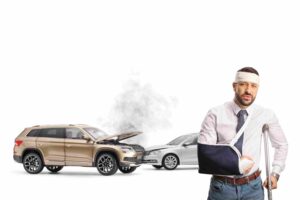
- Consultation: We listen, assess liability, injuries, and insurance, and map critical deadlines at no cost.
- Investigation and preservation: Hold letters, vehicle and scene inspections, EDR downloads, and records requests. If a public entity is involved, we serve MTCA/LGTCA notices within one year to preserve those claims.
- Medical stabilization: We do not value a serious injury case until your treatment reaches a steady state or a provider can opine on future care and impairment.
- Demand and negotiation: We present a comprehensive package and engage in structured negotiation or mediation.
- Suit and discovery: If necessary, we file and litigate, using experts in accident reconstruction, biomechanics, vocational loss, and life‑care planning.
- Resolution: Many cases resolve before trial; when they do not, we try the case so a jury can hear your story and see your evidence.
Frequently Asked Questions
What if an adjuster says I was “a little” at fault?
In Maryland, even a small percentage of fault can bar recovery under contributory negligence. Do not guess or concede fault—talk to us first. We use physical evidence, timing data, and video to counter that defense.
Does not wearing a seat belt ruin my case?
Maryland’s statute generally forbids using seat‑belt non‑use as evidence of negligence or to cut damages in civil motor‑vehicle cases (outside of restraint‑defect litigation).
How long do I have to file?
Most personal‑injury claims must be filed within three years, but if the State or Baltimore City is implicated, you may need to send a written notice within one year under MTCA or LGTCA. Call us immediately so we can calendar the correct dates.
What if the other driver carried low limits or fled the scene?
We pursue UM/UIM benefits and, where applicable, EUIM stacking. On newer policies, EUIM is now the default unless you opt out, which can dramatically improve recovery in underinsured scenarios.
Alcohol was involved. Can we sue the bar?
Maryland does not recognize dram‑shop liability against bars for serving adults. There is, however, limited social‑host liability when an adult knowingly allows under‑21 drinking that leads to harm. We evaluate whether those facts fit your case.
How will you find objective proof?
We pull ACRS crash reports and body-worn camera footage, canvass CitiWatch and ATVES locations, and image the vehicles’ EDRs through qualified experts. These pieces often create a clear, time‑stamped picture of fault.
Talk to a Baltimore Head‑On Crash Lawyer Today
You do not have to navigate medical bills, lost wages, and insurance tactics alone. The sooner you involve counsel, the more evidence we can preserve and the more options you will have.
Contact Holzman & Dickriede Attorneys at Law for a free, no‑obligation case review. We’ll listen, explain your rights, identify every coverage path—from PIP to EUIM—and move quickly to protect your case, your time, and your future.
